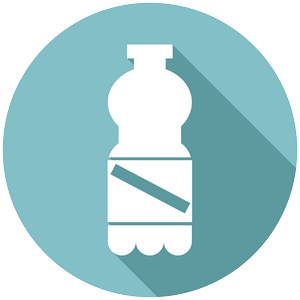Why Apple's Night Shift Might Be Losing You Sales: The Unexpected Power Of Blue Lighting
Relevant topics Archive, Strategy
Discover how to get consumers to buy more hedonic products by applying the right type of lighting. Research shows that blue lighting influences consumers in their motivation to buy more hedonic products.
Imagine you’d walk through a large clothing shop with semi-expensive brands. They happen to be the brands you like to wear, although your wardrobe is full of more than decent jeans, trousers, shirts and sweaters already. Nonetheless, about ten minutes later you find yourself walking out of the shop with some fabulously looking new cloths. What did just happen? You might have become a victim of the influence of blue lighting on your brain.
Since evidence about atmospherics and their role in affecting consumers took a big leap about 10 - 15 years ago, retailers think more than twice about how they set-up and dress-up their stores.
Already in 2002, Parsons found evidence that atmospherics play a significant role in affecting consumers’ attitudes and behaviors, also in virtual shopping environments. Together with other researchers like Cheng, Wu & Yen in 2009, he showed that these influences are stronger than we might think and aren’t limited to physical shopping environments.
Of particular interest is blue light. At the wavelength of about 460 nm, it has positive effects on consumers’ alertness (Figueiro, Bierman, Plitnick, & Rea, 2009), arousal (Beaven & Ekstrom, 2013), and mood (Knez & Kers, 2000; Tosini, Ferguson, & Tsubota, 2016). Next to that, other research points out that color is one of the first visual elements that attracts a person’s attention. Thereby, it is able to influence an estimated 60% of purchase choices (Sullivan, 2008).
The effect of blue lighting in the brain
We already knew that blue light is able to elicit pleasure (Beaven & Ekstrom, 2013) and creativity (Mehta & Zhu, 2009). More technically, we know that blue light affects both melanopsin and melatonin, and therefore the circadian cycle in general (Holzman, 2010). For years, it was thought that those effects surfaced after hours or days of exposure. More recently, researchers found that even a simple and momentary exposure will do the trick to raise awareness (Lehrl et al., 2007), information processing speed and performance (Gabel et al., 2013), and general cognitive functioning (Burattini, Piccardi, Ferlazzo, Giannini, & Bisegna, 2014).
Applications of motivating blue lighting
We already know about several downstream effects of blue lighting from past research. For example, Van Hagen (2011) showed how people perceive waiting times to be shorter and objects perceive to be smaller and lighter. Furthermore, we know from blue light that it boosts browsing times and stimulates purchase intention (Bellizzi & Hite, 1992). In virtual environments, it stimulates the intention to purchase particularly expensive items (Biers & Richards, 2005).
The current research finds effect of blue light in two separate environments. They find evidence for both their hypotheses:
- “In the condition of a mobile device with white warm light, the purchase intent regarding hedonic products is higher when there is blue actinic ambient lighting compared to white warm ambient lighting.”
- “In the condition of white warm ambient light, the purchase intent regarding hedonic products is higher when a mobile device with a blue actinic lighting is used compared to using a mobile device with white warm lighting.”
So, how would you apply this neuromarketing insight in your business environment? Both in physical and virtual environments you should be aware of the influence blue lighting will have in the brain. Both in ambient conditions and as part of a mobile display, the light enhances consumers’ purchase intentions for hedonic products.
Should you be the shop-owner of the store in the introduction, you probably already use some blue lighting by plain luck. You might be able to capitalize on it a little more or apply it year-round, instead of just during the winter promotions. Contrary to the lighting-color, the blue lighting (460 nm) warms consumers to buy hedonic products, by pushing their ‘pleasure-buttons’ in the brain.
And what about online shopping? You might want to change the color of product photo backgrounds to a color that emits blue lighting when presented on a mobile device. Or even the background color of your website in general.
Pro-tip: be aware of Nightshift (iOS) and type-like applications that reduce blue lighting on mobile devices during night hours. Your ideal selling and promotion window would be during daylight conditions, since mobile devices will then emit their famously blue lights and motivate to purchase hedonic products automatically.
For hedonic products only
Like almost all findings in neuromarketing and other psychological fields of study specific boundary conditions apply. In this case, the purchase motivating effect only holds for hedonic products and explicitly not for utilitarian products. It works fine for clothing, chocolate cream, sunglasses, watches or lingerie, but not for detergent, shampoo, toothpaste, toilet paper, or calculators.
Take-home points:
- Use blue lighting to motivate consumer purchasing intentions
- Only for hedonic (and not for utilitarian) products
- Both by ambient and mobile device lighting
Further Reading
-
How 7up changed the opinion of their customers by simply changing the diagonal orientation of their logo
What does Snapple have in common with Perrier or 7up? Obviously, these companies all sell soft drinks, but there is another thing these brands have in common. All these three companies have changed their logo recently. Nothing special so far. Companies have to update their visual identity once in a while to keep up with the times.


